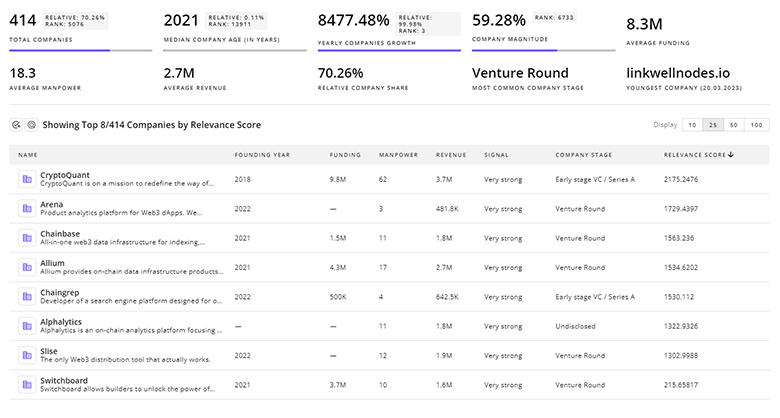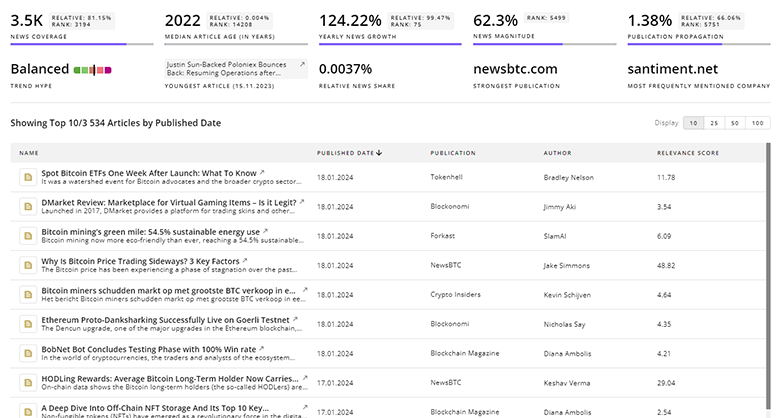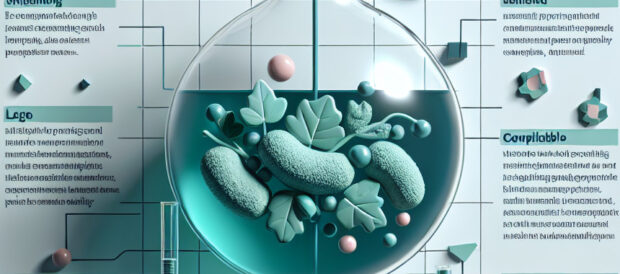
3D Bioprinting Report
: Analysis on the Market, Trends, and TechnologiesThe 3D bioprinting market stands at an inflection point: the internal trend data values the 2022 market at USD 1.5 billion and projects USD 4.44 billion by 2028 (19.8% CAGR), signaling strong near-term commercialization pressure on companies to move from prototypes to regulated products. External market forecasts align on double-digit growth but differ on horizon and magnitude — examples include a USD 2.95–3.03 billion baseline in the mid-2020s expanding toward USD 8–13 billion by the early 2030s depending on source 3D Bioprinting Market Size, Trends & Share Report (2025-2032) 3D Bioprinting Market Size to Hit USD 13.05 Billion by 2034. The practical implication for investors and product teams is clear: validate scalability, bio-ink supply chains, and regulatory pathways now, because clinical translation will reward platform providers that pair hardware, materials, and software into proven workflows.
This report was last updated 21 days ago. Spot an error or missing detail? Help us fix it by getting in touch!
Topic Dominance Index of 3D Bioprinting
To identify the Dominance Index of 3D Bioprinting in the Trend and Technology ecosystem, we look at 3 different time series: the timeline of published articles, founded companies, and global search.
Key Activities and Applications
- Drug discovery and preclinical testing — adoption of human-relevant tissue models and organ-on-chip platforms to improve predictivity and reduce animal use; this is a primary commercial use-case driving near-term revenue for bioprinting consumables and service models 3D Bioprinting Market Set to Reach USD 8.42 Billion by 2034, Driven by 12.54% CAGR.
- Regenerative medicine and implantables — patient-matched scaffolds, skin grafts, and musculoskeletal implants are moving into clinical trials and early commercialization, creating demand for clinical-grade bio-inks and validated manufacturing processes 3D Bioprinting Market Outlook (2025 to 2035).
- Disease modeling and precision oncology — patient-derived, 3D tumor models support treatment decision research and enable companion diagnostic workstreams; these models reduce late-stage drug failures
- Point-of-care and in vivo bioprinting — handheld and intraoperative printing approaches target wound repair and custom implants, shifting some value capture from centralized CDMOs to hospital or clinic point-of-care units 3D Bioprinting: Creating Tissues and Organs.
- Biomaterials and bio-ink commercialization — supply of defined, regulatory-friendly bio-inks is an independent revenue stream that scales faster than full therapeutic products and underpins almost every downstream application UPM Biomedicals.
Emergent Trends and Core Insights
- Multi-material and heterogeneous printing is becoming the practical standard for functionally complex tissues; vendors that combine nozzle/volumetric modalities with tuned bio-inks capture higher value in drug-screening and regenerative product workflows Recent breakthroughs in 3D bioprinting: A look at trends and challenges.
- AI and computational design are shifting from lab tools to production controls — simulation and closed-loop process control reduce trial cycles and improve reproducibility, a requirement for regulatory acceptance
- Vascularization and perfusable constructs remain the single most important technical barrier to thick tissue clinical translation; solutions that integrate printing + bioreactor maturation create defensible differentiation 3D Bioprinting in Tissue Engineering: Advancements, Challenges, and Pathways to Clinical Translation.
- Market and funding pulse is increasingly regionalized: Asia-Pacific shows fastest growth rates while North America retains largest commercial spend — this creates divergent go-to-market strategies for scale-up and regulatory filings 3D Bioprinting Market - Global Forecast 2025-2032.
- Regulatory uncertainty and absence of harmonized standards for bio-inks, manufacturing controls, and long-term safety data will continue to slow high-value clinical approvals; companies with early regulatory engagement and quality systems will convert faster to revenue 3D Bioprinting Market: Trends, Opportunities and Competitive Analysis 2023-2028.
Technologies and Methodologies
- Inkjet and microextrusion (syringe) printing dominate current deployments due to their resolution and material flexibility; inkjet often captures largest revenue share for tissue-model workflows while extrusion leads in scaffold and implant fabrication Coherent Market Insights gminsights.
- Laser-assisted printing supports single-cell precision and complex patterning for vascular and neural constructs; select vendors commercialize LAB where pattern fidelity matters PhosPrint P.C..
- Volumetric and tomographic printing deliver dramatic speed gains for centimeter-scale constructs and are emerging for production scenarios that require short maturation windows
- Hybrid and 4D biofabrication combine fibers, electrospinning, and stimuli-responsive materials to produce anisotropic matrices that better mimic ECM mechanics; these approaches matter for skin, breast reconstruction, and load-bearing tissues
- Software, AI simulation, and closed-loop QC platforms are moving from lab augmentation to essential manufacturing components — they reduce failed prints and accelerate qualification for regulatory submissions Advanced Solutions Life Sciences.
3D Bioprinting Funding
A total of 135 3D Bioprinting companies have received funding.
Overall, 3D Bioprinting companies have raised $4.3B.
Companies within the 3D Bioprinting domain have secured capital from 658 funding rounds.
The chart shows the funding trendline of 3D Bioprinting companies over the last 5 years
3D Bioprinting Companies
- PrintBio, Inc. — A clinical-stage developer focused on implantable, bioresorbable 3D-printed living tissue products and an FDA 510(k) pathway for its 3DMatrix™ surgical mesh; small team, clinical orientation, and early human implants position it to capture near-term clinical use cases where a focused regulatory strategy matters
- Carcinotech — Provides patient-derived, assay-ready 3D tumor models using proprietary bioprinting (Carcino3D™) for precision oncology and drug screening; the company targets translational contracts with pharma and CROs to monetize predictive in vitro models
- Viabio — Early-stage software specialist building AI-driven modelling and simulation tools for bioprinting process optimization; its value lies in shortening protocol development and improving viability metrics, a high-leverage product for both printer OEMs and large adopters
- biovature GmbH — Pioneers of 4D-Fibroprinting that integrate fiber spinning with printing to recreate ECM-like fibrillar structures; this technology targets skin and reconstructive applications where fiber architecture controls healing outcomes
- BIO INX — Niche bio-ink house commercializing materials across deposition, light-based, and multiphoton platforms; their strategy addresses a practical gap: reproducible, application-specific inks that speed adoption by labs and contract developers
Identify and analyze 505 innovators and key players in 3D Bioprinting more easily with this feature.

505 3D Bioprinting Companies
Discover 3D Bioprinting Companies, their Funding, Manpower, Revenues, Stages, and much more
3D Bioprinting Investors
TrendFeedr’s investors tool offers a detailed view of investment activities that align with specific trends and technologies. This tool features comprehensive data on 687 3D Bioprinting investors, funding rounds, and investment trends, providing an overview of market dynamics.

687 3D Bioprinting Investors
Discover 3D Bioprinting Investors, Funding Rounds, Invested Amounts, and Funding Growth
3D Bioprinting News
Stay informed and ahead of the curve with TrendFeedr’s News feature, which provides access to 4.8K 3D Bioprinting articles. The tool is tailored for professionals seeking to understand the historical trajectory and current momentum of changing market trends.

4.8K 3D Bioprinting News Articles
Discover Latest 3D Bioprinting Articles, News Magnitude, Publication Propagation, Yearly Growth, and Strongest Publications
Executive Summary
3D bioprinting now bridges scientific demonstration and clinical opportunity. The internal trend data shows a compact but accelerated market trajectory (USD 1.5B in 2022 to USD 4.44B by 2028 at ~19.8% CAGR), and external forecasts corroborate sustained double-digit growth through the 2030s. Near term, the highest commercial traction sits in drug discovery models, bio-inks, and point-of-care implant workflows. Success factors for companies and investors are concrete and operational: secure supply and quality of bio-inks, invest in AI and process control to reach regulatory reproducibility, and develop regional regulatory strategies that match the fastest growth corridors. Firms that combine validated hardware, clinically acceptable materials, and software-driven reproducibility will convert R&D momentum into defensible, revenue-generating platforms as the industry moves into routine clinical use.
Interested in enhancing our coverage of trends and tech? We value insights from experts like you - reach out!











